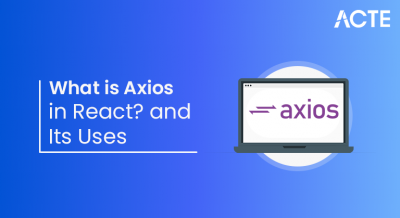
- Introduction
- Internal Recruitment
- External Recruitment
- Direct Applications
- Employment Agencies
- Campus Recruitment
- Employee Referral Programs
- Online Job Portals
- Social Media Hiring
- Recruitment Process Outsourcing (RPO)
- Advantages and Disadvantages
- Conclusion
Introduction
Recruitment is one of the most vital functions of human resource management, focusing on the process of attracting, shortlisting, selecting, and appointing suitable candidates for job roles within an organization. A well-organized recruitment process ensures that the organization hires the right talent, which is crucial for its success

Companies use various methods and strategies to meet their staffing needs, from traditional approaches like employee referrals to modern methods like social media hiring. These methods of recruitment can be broadly categorized into internal and external recruitment, each with its advantages and disadvantages. In this content, we will explore different recruitment strategies, discuss their effectiveness, and analyze their pros and cons in helping organizations build a competent workforce.
To Explore PMP in Depth, Check Out Our Comprehensive PMP Certification Training To Gain Insights From Our Experts!
Internal Recruitment
- Internal recruitment refers to the process of filling job vacancies within an organization by considering its existing employees.
- This can be done through promotions, transfers, or internal job postings. The main advantage of internal recruitment is that it motivates employees by providing opportunities for career growth and advancement.
- It also saves the organization time and money since the existing employee is already familiar with the company culture and processes.
- One of the most significant benefits of internal recruitment is that it promotes loyalty and helps in retaining top talent.
- Employees are more likely to stay with an organization that offers opportunities for career development.
- Furthermore, internal recruitment helps reduce onboarding time since the employee is already trained and can quickly transition into the new role.
However, the downside is that it may limit the diversity of ideas and skills in the organization, as employees are already within the company’s environment.
External Recruitment
- External recruitment is the process of sourcing candidates from outside the organization to fill job vacancies.
- This can be done through various channels, including job advertisements, employment agencies, and online platforms.
- External recruitment offers a broader talent pool and allows organizations to bring in fresh perspectives and diverse skill sets that may not exist within the company.
- A key benefit of external recruitment is the opportunity to recruit candidates who bring new ideas and experiences, potentially improving innovation within the organization.
- It is particularly useful when specific skills are required that are not available internally.
However, external recruitment can be more time-consuming and costly compared to internal recruitment. The selection process involves screening and interviewing candidates who may not be familiar with the company’s culture, which can increase the risk of poor cultural fit.
Are You Preparing for PMP Jobs? Check Out ACTE’s Project Management Interview Questions & Answer to Boost Your Preparation!
Direct Applications
Direct applications occur when candidates submit their resumes or job applications directly to the company, typically through the organization’s career portal or email. This method of recruitment allows candidates to apply for positions without the need for intermediaries. Direct applications are often received through job advertisements or through speculative applications, where candidates express interest in working for the organization even without a specific vacancy being advertised. The advantage of direct applications is that it provides an opportunity for organizations to manage the hiring process entirely on their own terms. It also allows companies to build their talent pipeline for future openings. However, the challenge with direct applications is that it may result in a large volume of unqualified or irrelevant applications, making the shortlisting process more time-consuming for HR teams. Additionally, this approach may not always attract passive candidates who are not actively seeking a new job.
Employment Agencies
- Employment agencies, also known as recruitment agencies or headhunters, act as intermediaries between employers and candidates.
- They help organizations find suitable candidates by sourcing, screening, and shortlisting applicants for specific roles.
- These agencies often specialize in particular industries or types of roles, providing an added level of expertise in identifying talent.
- The primary advantage of using employment agencies is that they save companies time by handling much of the initial legwork, such as advertising, screening, and interviewing.
- This can be especially useful for filling specialized roles or when there is a need to hire quickly. Furthermore, agencies often have access to a large pool of candidates, including passive job seekers who are not actively applying for jobs.
However, the drawback is that employment agencies typically charge a fee, which can be expensive, particularly for senior or specialized roles.Additionally, there can be a lack of control over the recruitment process, as the agency handles many of the stages.
Campus Recruitment
Campus recruitment Process, is a strategy that involves sourcing talent directly from educational institutions such as universities, colleges, and vocational schools. This method targets recent graduates or students who are about to enter the workforce, offering them employment opportunities.The often includes career fairs, on-campus interviews, and internship programs that serve as a pipeline for future employees. One of the key benefits of is that it allows organizations to tap into a pool of young, motivated, and highly trainable candidates who are eager to start their careers. It also helps create a positive brand image among educational institutions and their students. However, can be time-consuming and expensive, particularly if the organization needs to visit multiple institutions. Additionally, candidates from this pool may lack practical experience, requiring significant training and development once hired.
Are You Interested in Learning More About PMP? Sign Up For Our PMP Certification Training Today!
Employee Referral Programs
- Employee referral programs involve current employees recommending candidates from their professional network for open job positions.
- These recommendations can be highly effective since employees are likely to refer individuals who they believe will be a good fit for the company’s culture and job requirements.
- Referral programs can be incentivized, with employees receiving bonuses or other rewards for successful referrals.
- The main advantage of employee referrals is that they often result in high-quality hires.
- Since the referring employee has a clear understanding of the company’s culture and requirements, the likelihood of a good cultural fit is higher.
- Referrals can also reduce the time to hire, as employees may already know someone who is qualified for the position.
- Social media, or social recruiting, involves using platforms like LinkedIn, Facebook, and Twitter to source and attract candidates.
- Organizations often post job openings on their company pages, engage with potential candidates, and promote their employer brand through social media channels.
- Social media recruiting also includes headhunting, where recruiters proactively reach out to candidates who may be a good fit for a role.
- The advantage of social media is that it allows companies to engage with passive candidates who may not be actively job hunting but are open to new opportunities.
- Social media also enables employers to build relationships with potential hires long before a position becomes available.
- Each recruitment method has its own set of advantages and disadvantages. Internal recruitment Process,offers speed and cost-effectiveness but can limit the diversity of talent.
- External recruitment broadens the talent pool but can be expensive and time-consuming.
- Direct applications provide control but may result in unqualified candidates.
- Employment agencies save time but incur costs, and targets fresh talent but requires significant effort.
- Employee referrals provide high-quality candidates but can limit diversity, while online job portals offer reach and efficiency but may generate overwhelming numbers of applications.
- Social media builds relationships but can be time-consuming, and RPO offers efficiency but sacrifices control.
However, the downside is that relying too heavily on referrals can lead to a lack of diversity, as employees may recommend people from similar backgrounds or networks.
Online Job Portals
Online job Posting portals such as LinkedIn, Indeed, Glassdoor, and Monster have become some of the most widely used platforms for recruiting candidates. These platforms allow employers to post job advertisements and search for potential candidates based on their qualifications, experience, and skills. Job seekers can also apply directly to posted jobs, creating a seamless recruitment process for both employers and candidates. The main benefit of using online Internship job portals is the vast reach and accessibility they offer. Employers can attract a large pool of candidates from diverse backgrounds and locations. Additionally, many job portals provide filtering tools that help HR teams narrow down candidates based on specific criteria, making the selection process more efficient. However, one of the challenges with online job portals is that it can lead to an overwhelming number of applications, requiring more time and effort to filter and evaluate candidates.

Social Media Hiring
However, it can be time-consuming to manage social media channels effectively, and not all social media platforms are ideal for every industry or role. Additionally, social media can sometimes result in unqualified candidates, especially if the job posting is not targeted to the right audience.
Recruitment Process Outsourcing (RPO)
Recruitment Process Outsourcing (RPO) is a strategic approach where an organization outsources part or all of its recruitment functions to a third-party service provider. RPO providers are responsible for managing various recruitment activities, from sourcing candidates to conducting interviews and onboarding. This model is particularly beneficial for organizations that lack the internal resources or expertise to handle recruitment at scale. RPO offers several advantages, including cost savings, improved recruitment efficiency, and access to specialized knowledge. RPO providers also bring industry expertise and can implement best practices that might not be available in-house. However, the downside is that outsourcing the recruitment process can result in a loss of control over certain aspects of the hiring process, such as candidate experience and company culture alignment.
Advantages and Disadvantages
Are You Considering Pursuing a Master’s Degree in PMP? Enroll in the PMP Masters Program Training Course Today!
Conclusion
In conclusion,methods of recruitment is an essential process for building a competent and diverse workforce. The choice of recruitment method depends on various factors such as the company’s needs, budget, timeline, and desired outcomes. Companies must evaluate the advantages and disadvantages of each recruitment method to select the best Internship approach for their specific requirements. By using a combination of these methods, organizations can enhance their chances of hiring top talent, improving both their recruitment process and overall success.



